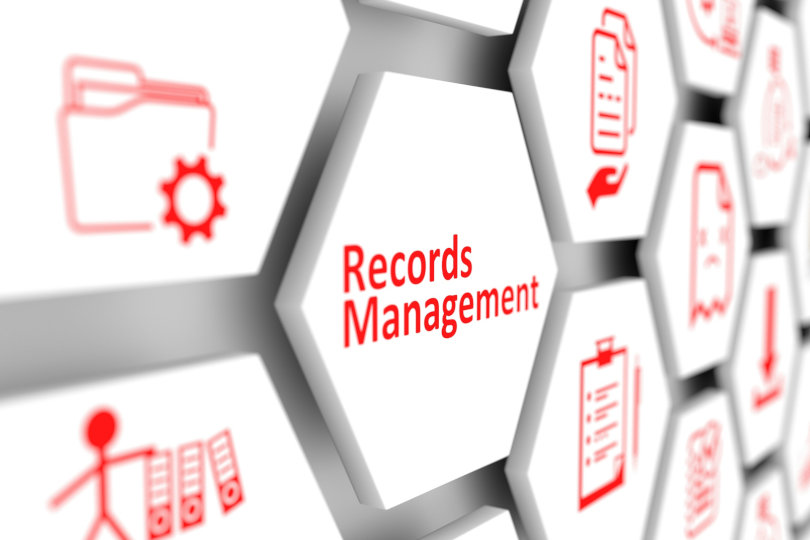In today’s digital landscape, effective information management is the cornerstone of any successful business. Central to this is a well-crafted records management strategy. Documents- vital to daily operations, decision-making, and regulatory compliance, represent more than papers stored in a dusty archive room. Ignoring this fundamental aspect of business can lead to operational inefficiencies, legal breaches, and significant reputational damage.
On the other hand, a well-executed records management strategy can streamline operations, fortify legal standing, and enhance customer trust. It’s a strategic lever, pulling businesses towards success and resilience.

This article aims to shed light on the critical nature of document management and provide a roadmap for developing a strategy that truly works for your business. Get ready to discover valuable insights enabling your business to operate more efficiently, confidently, and more agile than ever.
Defining Records Management And Its Significance
Records management is about maintaining orderly control over an organization’s files, from their creation to their disposal. It encompasses activities such as classifying, storing, preserving, and retrieving various types of documents, internal (like employee files or financial statements) and external (such as customer data or regulatory filings).
In an increasingly digital world, managing these physical or digital documents is more critical than ever. Records serve as a resource for decision-making and legal reporting and provide historical business insights.
The exponential growth in digital data necessitates adopting technology like records management software. Such tools simplify the file’s life cycle and ensure regulatory abidance, all within the context of a comprehensive records management strategy.
Understanding Legal Mandates And Industry Guidelines For Records Management
Navigating the terrain of document management also involves understanding the legal requirements and industry standards that govern it. Laws and regulations dictate how organizations manage, preserve, and dispose of their records.
However, the legalities governing file management can differ significantly across industries, countries, and types of records. These legal frameworks and industry-established best practices guide businesses on how to create, capture, and manage their information effectively.
By strictly adhering to legal requirements and industry standards, companies can ensure compliance, boost operational efficiency, and reduce risks. Such commitment underscores the value of a well-informed approach to document management, emphasizing the importance of a thorough understanding of the established guidelines.

Steps To Develop A Records Management Strategy
Developing a robust strategy requires a systematic approach. Here are the key steps:
1. Identify Your Record Types
Each organization manages a diverse array of file types, which form the bedrock of its operations. This broad spectrum can include internal documents like team member data, legal documents such as contracts and agreements, and external data like customer information.
The format of these files can range from traditional physical forms to their digital counterparts. Identifying and understanding the types of documents your business manages, from HR paperwork to complex legal documentation, is the launching pad for devising an effective records management strategy. This comprehensive perspective forms the basis for subsequent strategic steps.
2. Define Your Objectives And Goals
Defining the objectives and goals of your records management strategy is a crucial starting point. These goals can cover various areas, such as enhancing efficiency, ensuring regulatory compliance, improving data security, or facilitating easy document retrieval. Each plan must adhere to the Specific, Measurable, Achievable, Relevant, and Time-bound (SMART) criteria.
For example, you might set a goal: “Reduce customer record retrieval time by 30% by the end of Q4 to improve client satisfaction.” This clearly defined goal will serve as the guiding light for your records management strategy, driving purposeful action and measurable outcomes.
3. Analyze Your Current Situation
It’s crucial to evaluate your current records management practices. This step involves a comprehensive inventory of your records, identification of system gaps, and a Strengths, Weaknesses, Opportunities, Threats (SWOT) analysis. For example, your current system is robust in preserving records (strength) but short in quick retrieval (weakness), presenting an opportunity for improvement. The outcomes of this evaluation will guide your strategy’s direction.
4. Develop Procedures For Record Creation, Storage And Retention
Creating robust file creation, storage, and retention procedures is crucial to a comprehensive records management strategy. These procedures address multiple aspects, from standardizing document creation to ensuring secure storage and setting retention periods in line with legal and business requirements.
This systematic approach fosters consistency and security across the board, ensuring regulatory adherence and strengthening the file management process.
5. Implement Security Measures And Access Controls
Implementing stringent security measures and access controls is essential in safeguarding sensitive data. These measures apply to both physical and digital realms. For instance, digital documents containing sensitive information could be encrypted and stored in a secure server with access granted only to specific individuals based on their roles and responsibilities.
Granting access solely to authorized personnel maintains the integrity and confidentiality of the data. These security measures protect valuable information and emphasize your organization’s commitment to responsible data management.
6. Plan for Disaster Recovery And Business Continuity
Integrating disaster recovery and business continuity planning into a records management strategy is crucial to proactive business administration. The process involves devising strategies to enable swift recovery and business continuity even during unforeseen disasters, such as a massive data breach or natural calamity. With such a plan in place, businesses can bounce back quickly, minimizing downtime and ensuring a smoother transition to normal operations.
For instance, a robust plan may incorporate routine backups of digital documents to a secure, off-site location or cloud storage. This strategy ensures the data is retrievable, enabling the rapid resumption of operations post-disaster.
7. Training And Change Management
Introducing a new records management strategy inevitably triggers change within an organization. Comprehensive training and adept change management are essential to navigate this transformation successfully. The process involves equipping employees with the necessary knowledge and skills to adapt to new procedures effectively. This robust training approach ensures a smooth transition, fostering seamless integration of the new strategy into daily operations.
For example, organizing workshops or training sessions that illustrate the nuances of the new system can mitigate resistance and promote adaptability. These informative sessions provide an avenue for employees to understand the system better, easing the transition and promoting the effective use of the new policy.
8. Monitor, Audit, And Adjust Your Strategy
Your records management strategy should evolve as needed. Continual monitoring, auditing, and adjustment of your system are essential. For instance, if regular audits reveal a frequent delay in record retrieval, it’s a cue to adjust your system for better efficiency. The strategy should flex and adapt to feedback and changes in your business environment.
Final Thoughts
Developing and implementing an effective records management strategy is no longer a luxury but a necessity in today’s digital age. Following this article’s information, businesses can transform their file management processes into a robust, efficient system.
A well-defined strategy, enhanced with appropriate technology, becomes a pivotal tool for ensuring regulatory compliance and productivity. This strategic fusion sets the stage for resilience and growth and underscores the significance of adaptability in a progressively digital world.
Remember, the journey to effective document management is not a one-time event but a continuous process requiring regular evaluation and refinement. Start this transformative journey today and let your records management strategy propel your business toward sustained success.







